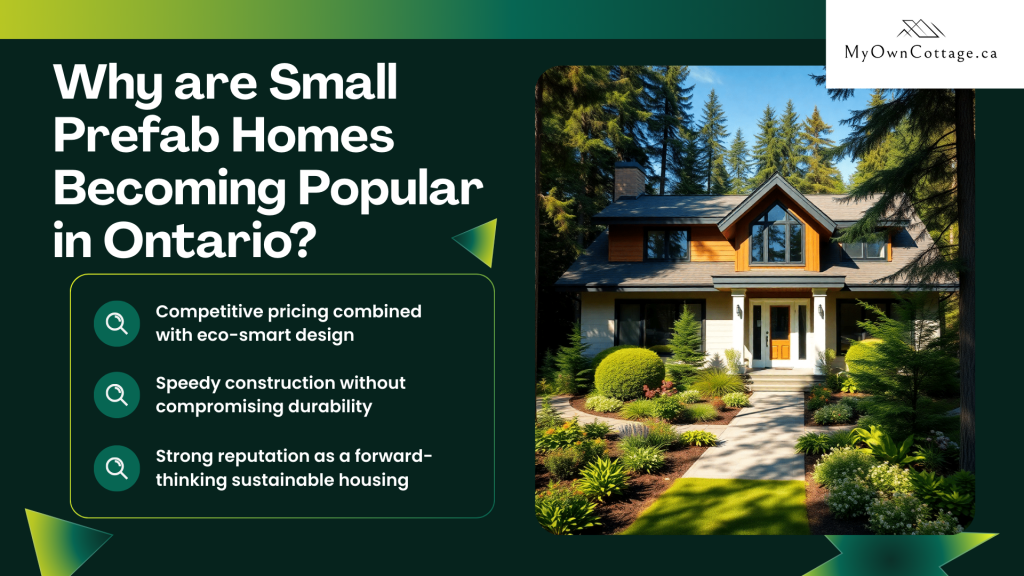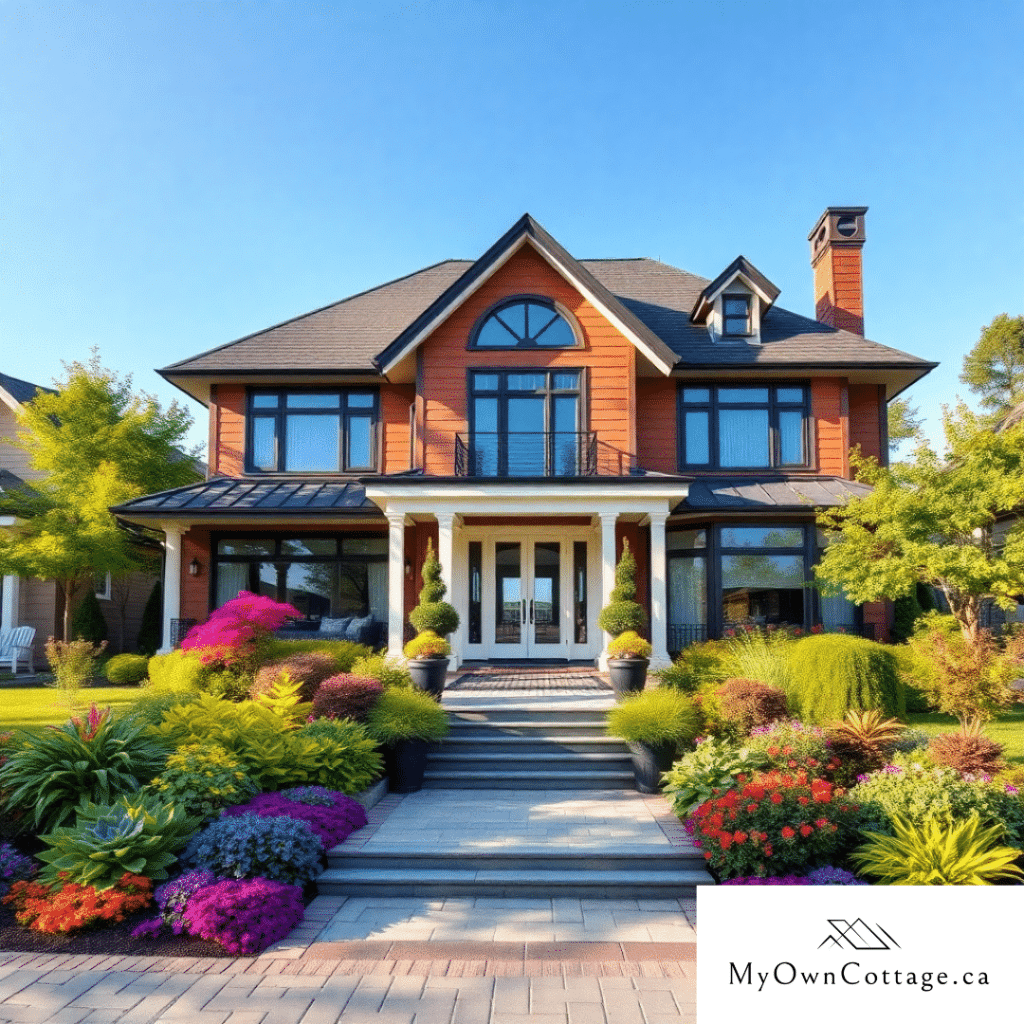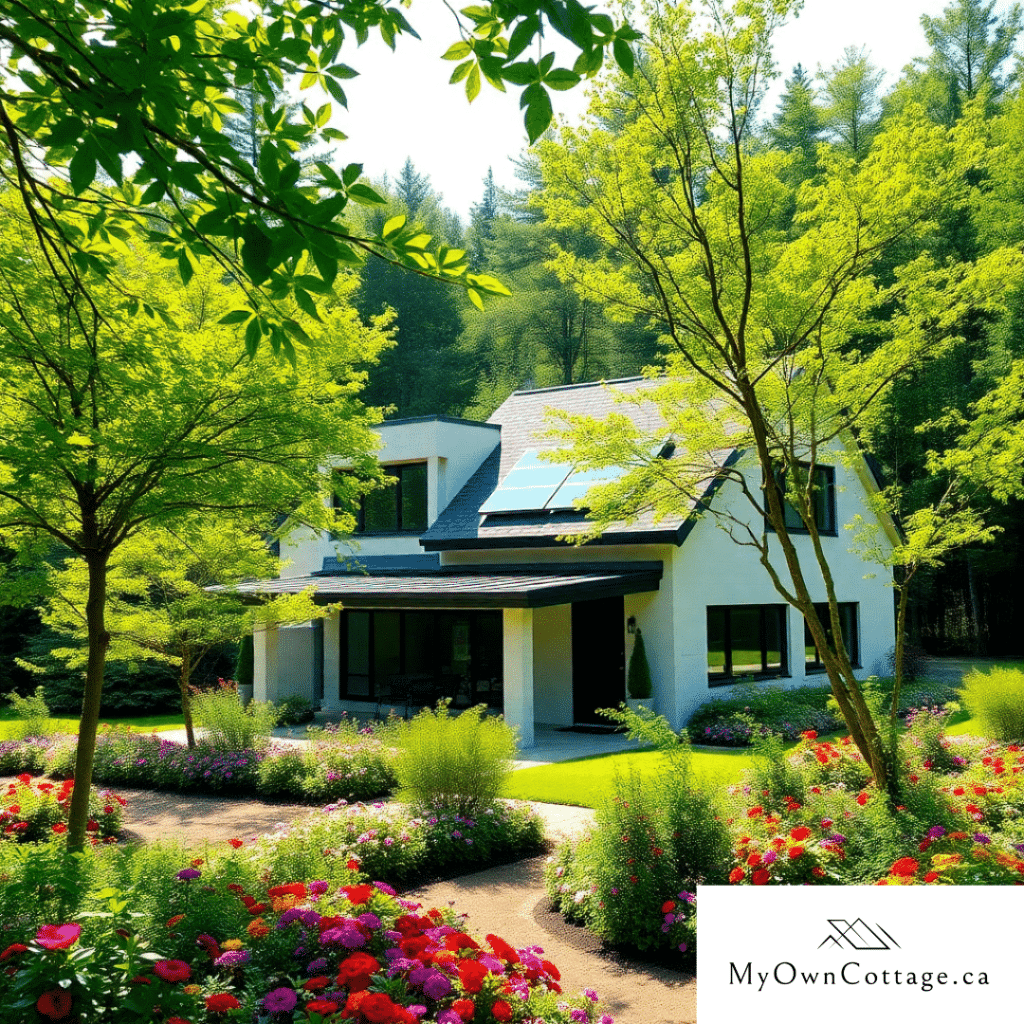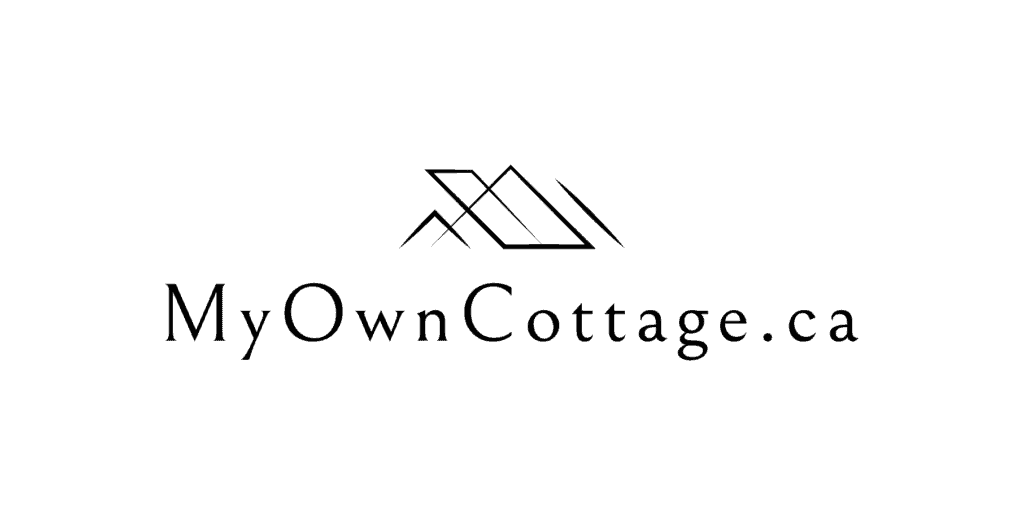Why Small Prefab Homes Are Gaining Popularity in Ontario
📅 Last updated: September 18th, 2025
✍️ Written by prefab building specialists at My Own Cottage
Ontario’s housing market is under pressure. Home prices continue to climb, construction timelines are stretching into years, and the supply of new builds still isn’t keeping up with demand. As a result, many buyers are exploring alternative housing solutions.
One option gaining momentum is the small prefab home. These factory-built homes are becoming increasingly popular across the province thanks to their affordability, eco-friendly design, and adaptability to different lifestyles.

If you’re exploring alternative housing, this article will explain why small prefab homes are trending in Ontario, what makes them appealing, and the key factors to consider before buying.
👉 Looking to explore real options? Check out our guide to Small Prefab Homes Ontario for Sale.
📌 Quick Overview: Why Prefab Homes Are Gaining Popularity
Affordable alternative to Ontario’s rising housing costs
Faster construction timelines than traditional homes, enabling quicker move-in
Energy-efficient and sustainable, reducing utility bills and environmental impact
Perfect for downsizing, supporting simple and minimalist lifestyles
Appealing to diverse buyers, including first-time homeowners, retirees, and eco-conscious families
What Are Small Prefab Homes in Ontario?
Prefab homes (short for prefabricated) are houses manufactured in sections at a factory and then transported to the site for assembly. This streamlined process makes them an increasingly popular alternative to traditional stick-built homes in Ontario.
Prefab vs. Modular vs. Kit Homes
Prefab homes – The broad category for all types of factory-built housing.
Modular homes – A type of prefab delivered in fully finished modules and assembled on-site.
Kit homes – Another type of prefab that requires more on-site construction and customization.
💡 Be sure to learn more about where you can buy small prefab homes in Ontario.
How Prefab Homes Are Built in Ontario
Factory-based construction improves quality control, reduces material waste, and shortens building timelines. This method ensures consistent standards while delivering homes more efficiently than traditional builds.
Key Benefits of Prefab Homes in Ontario
Lower costs compared to traditional housing construction
Faster move-in dates thanks to streamlined building processes
Energy efficiency for reduced utility bills and a smaller environmental footprint
“Prefab housing allows us to build 30–50% faster while meeting or exceeding Ontario Building Code standards.”
— Anna McCarthy, Licensed Architect (OAA)

Key Benefits of Small Prefab Homes Ontario Buyers Love
💰 Affordability & Lower Construction Costs
With Ontario’s average home price sitting well above the national benchmark, many buyers are asking: Are prefab homes a more affordable option?
In many cases, the answer is yes. Modular construction helps reduce labor costs, minimize delays, and shorten build timelines. For first-time buyers, retirees, and families seeking affordable prefab cottages in Ontario, this makes homeownership much more achievable.
Real-World Example
A couple in Hamilton reported saving nearly 20% on their total home cost compared to a traditional build — and they were able to move in six months earlier than planned.
🚚 Speed and Efficiency of Prefab Construction
One of the biggest advantages of prefab construction is speed. Unlike traditional builds that often take many months — or even years — prefab and modular homes can be completed in just a few weeks.
For buyers eager to move in quickly, as well as those considering seasonal cottages or secondary residences, prefab methods provide a reliable way to bypass lengthy construction delays and enjoy their new space sooner.
🌱 Sustainability & Eco-Friendly Prefab Homes Ontario
Ontario’s push for greener building practices is fueling demand for eco-friendly prefab homes.
These homes are designed with sustainability in mind and offer several key advantages:
Reduced construction waste through factory precision and efficient material use
Superior energy efficiency with insulated panels and airtight construction
Support for net-zero living, including options like solar integration and passive design features
For eco-conscious buyers, prefab and tiny modular homes provide a practical way to lower their environmental footprint while enjoying modern, efficient living.
These prefab designs also align with the sustainable housing goals promoted by many Ontario municipalities, making them a future-ready choice.

In fact, small prefab homes are often more energy-efficient than traditional houses.
“Many of today’s prefab homes in Ontario are built to exceed current energy-efficiency standards. With airtight envelopes and high-performance insulation, they actively support net-zero living goals.”
— Michael O’Donnell, Certified Energy Advisor
🏡 Lifestyle and Downsizing Trends
According to Statistics Canada, the average Ontario home price remains one of the highest in Canada, consistently above the national benchmark.
Beyond this affordability concern, a cultural shift is fueling the growing popularity of small prefab homes in Ontario.
The downsizing movement and rising interest in minimalist living are encouraging buyers to choose smaller, more efficient spaces.
Retirees, remote workers, and urban millennials are leading this trend. They consistently pursue small prefab homes that can be customized in Ontario.
For these groups, compact modular designs and prefab cottages provide a way to simplify daily life while still enjoying modern comfort and functionality.
Who Buys Small Prefab Homes in Ontario?
Prefab housing attracts a wide range of buyers across Ontario, including:
First-time buyers seeking an affordable path to homeownership
Retirees looking to downsize into smaller, low-maintenance spaces
Eco-conscious families prioritizing sustainability and energy efficiency
Remote workers leaving Toronto and other cities for more space in smaller towns
Customer Story
One Toronto family moved into a prefab home in Northern Ontario to escape high urban housing costs. They praised the faster build timeline and lower monthly utility bills, thanks to the home’s energy-efficient design.
📜 The Canada Mortgage and Housing Corporation (CMHC) notes that off-site factory construction can cut timelines by up to 50%, reducing labor shortages and weather delays.
💸 Small Prefab Home Costs in Ontario (2025 Guide)
One of the most common questions future homeowners ask is: “What does a small prefab home actually cost in Ontario?”
While costs can vary depending on location, design, materials, and builder, a realistic estimate for a 700 sq. ft. prefab home in Ontario typically falls within the following range:
✅ Estimated Cost Breakdown
| Item | Estimated Cost (CAD) |
|---|---|
| Base Prefab Build (700 sq ft) | $140,000 – $180,000 |
| Site Preparation (grading, foundation, septic, driveway) | $10,000 – $25,000 |
| Permits & Inspections | $5,000 – $8,000 |
| Utility Hookups (electricity, water, internet) | $6,000 – $10,000 |
💡 Pro Tip: Always ask your builder for an itemized quote. Some builders may include site prep or utility work in a turnkey package, while others bill separately.
🎯 Factors That Affect Prefab Home Pricing in Ontario
Several variables can influence the final price of a prefab home in Ontario. Key considerations include:
Design complexity – Custom layouts, add-ons, or unique finishes can increase overall costs.
Lot location – Rural properties may require additional site preparation, while serviced urban land often comes with higher price tags.
Local building codes & permits – Fees and requirements vary by municipality and can add to the total cost.
Energy-efficient upgrades – Features such as solar panels, triple-pane windows, or advanced insulation boost long-term savings but raise upfront expenses.
📂 For a deep-dive into real-world costs, be sure to view our comprehensive guide to small prefab homes in Ontario with prices included.
🛡️ Small Ontario Prefab vs Traditional Homes: Key Comparisons
Choosing the right type of home isn’t just about design — it’s also about performance, speed, sustainability, and long-term cost.
For Ontario buyers weighing their options, here’s how small prefab homes compare to traditional site-built homes across key decision-making criteria:
🔍 Side-by-Side Performance Comparison
| Feature | Prefab Homes | Traditional Homes |
|---|---|---|
| Build Time | 3–6 months | 9–18 months |
| Waste Reduction | Up to 80% less waste (factory-controlled) | Minimal controls, often higher waste |
| Energy Efficiency | High — airtight panels, precision fit | Variable — depends on contractor |
| Cost Predictability | High — upfront pricing, fewer delays | Lower — often affected by overruns |
✅ Takeaway: Prefab homes outperform traditional homes in key areas that matter most to modern buyers—speed, sustainability, and savings.
Depending on your needs, small prefab homes can be sold as move-in ready or as kits in Ontario.
Challenges of Buying a Small Prefab Home in Ontario
While prefab homes in Canada are gaining popularity, buyers should also be aware of potential challenges:
Zoning laws and permits – Local bylaws may restrict where prefab homes can be built. Always check municipal regulations before purchasing land.
Financing – Some lenders still apply stricter requirements for prefab mortgages. Buyers should ask specifically about financing options for small prefab homes in Ontario.
Design flexibility – Many modern prefab homes allow customization, but some builders limit layouts and finishes.
Resale value – Although the market is improving, prefab homes can still face skepticism from certain buyers, which may affect resale potential.
🧾 Compliance & Certifications for Ontario Prefab Homes
When building a home in Ontario — whether prefab or traditional — compliance is non-negotiable. To ensure your prefab build is legally approved, insurable, and eligible for resale, it must meet all provincial standards and certifications.
What to Know Before Signing a Contract with a Prefab Builder
Asking your builder directly about these requirements helps protect your investment and prevent costly surprises later.
Ontario Building Code (OBC) compliance – Every prefab home must meet or exceed OBC requirements.
CSA certification – Choose homes that carry Canadian Standards Association (CSA) approval for factory-built housing.
Municipal permits – Local approvals and inspections are required before construction begins.
Insurance eligibility – Confirm with your insurer that the prefab home design and builder meet coverage standards.
- Residential prefab mortgages – Small prefab homes are eligible for residential mortgages in Ontario, but there are also stipulations to be aware of.
✅ CSA-A277 Certification Explained
Most prefab homes in Ontario must comply with the CSA-A277 certification. This standard ensures that:
Design, materials, and construction all meet Canadian building regulations
Factory inspections are conducted by certified third-party inspectors
Municipal recognition is granted, making the home eligible for building permits across Ontario
👩⚖️ Buyer Tip: Before signing a contract, ask your builder:
“Is your factory CSA-A277 certified, can you provide documentation, and how long does it take to order and receive my small prefab home?”
🏛️ Ontario Building Code (OBC) Compliance
All prefab homes in Ontario must comply with the Ontario Building Code (O. Reg. 332/12), whether they are built off-site or on-site. Meeting these standards ensures:
Safety and structural integrity of the home
Energy efficiency compliance, including insulation and HVAC performance
Fire and life safety protections to safeguard residents
Accessibility features, where required under provincial law
Municipalities will not issue an occupancy permit unless full OBC compliance is documented. This makes working with a knowledgeable prefab builder in Ontario essential to avoid costly delays.
Remember, depending on your property type, there are limits where you can put a small prefab home in Ontario.
🔍 For reference: Ontario Building Code →
📜 Permits, Inspections & What to Clarify with Your Builder
Many of our clients start their journey by asking, “What permits are required to build a small prefab home in Ontario?“
Before you begin construction, confirm that your prefab home in Ontario is fully approved for your specific location. Use this checklist of key questions to ask your builder:
🔹 Zoning & Permits
Do you assist with zoning verification for my property?
Will you handle, or at least guide, the building permit application process?
🔹 On-Site Inspections
Who is responsible for the foundation, utility hookups, and site preparation?
Will municipal inspections be required after delivery, and who coordinates them?
🔹 Warranty Coverage
Are you registered with the Tarion Warranty Corporation (mandatory for most new homes in Ontario)?
What is included in your structural and workmanship warranty coverage?
Asking these questions early helps prevent costly surprises and ensures your prefab home is legally compliant, insurable, and protected for the long term.
📄 Required Documentation Checklist
Before signing a contract, confirm that your prefab home builder in Ontario supplies all required documentation. At a minimum, ask for:
✔ CSA-A277 certification – Proof the factory is certified for prefab construction
✔ Detailed architectural drawings – Complete plans showing layout, structure, and finishes
✔ Ontario Building Code (OBC) compliance documentation – Ensures safety and legal approval
✔ Site-specific permit package – Includes zoning verification and municipal permit applications
✔ Tarion warranty registration (if applicable) – Protects your investment under Ontario’s new home warranty program
🏆 Helpful Tip: Builders who proactively provide this documentation — without being asked — are usually more trustworthy and experienced.
Of note, is that some companies also offer eco-friendly small prefab homes.
Future of Prefab Homes in Ontario Housing Market
Looking ahead, prefab housing in Ontario is expected to play a significant role in addressing the province’s ongoing housing challenges. Industry experts predict:
Wider adoption in both urban infill projects and rural communities
Government incentives to encourage sustainable and energy-efficient prefab construction
Growth of prefab communities designed around affordability, accessibility, and green living
With rising demand for faster, more affordable, and environmentally conscious housing, prefab homes are well-positioned to become a cornerstone of Ontario’s future housing strategy.
If you’re ready to explore your options, check out our small prefab homes for sale in Ontario to compare models, costs, and builders.
Your Popular Small Prefab Home Designs in Ontario
Small prefab homes are reshaping Ontario’s housing market.
They provide an affordable path to homeownership, can be built faster than traditional homes, and align perfectly with today’s sustainability and lifestyle trends.
Ready to Get Started on Your Prefab Home?
Simply book a free consultation, call us directly or view our design catalogue today.
🧑💼 Request a Free Consultation
📲 Call Us Directly: (705) 345-9337
🏘️ View Our Design Catalogue
✅ Ontario-Built | ⚡ Energy-Efficient | 🏡 Fully Customizable | 🚚 Fast Delivery
Alternatively, for your convenience, you can also simply fill out the contact form below and we’ll get back to you soon! 👇
FAQ: About the Popularity of Small Prefab Homes in Ontario
What are small prefab homes in Ontario?
Small prefab homes are houses built in off-site factories in modules or panels, then transported and assembled on the site. They differ from traditional site-built homes in that they offer more controlled quality, predictable costs, and shorter construction timelines.
Why are prefab homes becoming popular in Ontario?
Prefab homes are gaining popularity due to affordability, faster construction, greater sustainability, improved quality control, and the ability to bypass delays associated with labour shortages and permitting processes.
Are prefab homes cheaper than traditional homes in Ontario?
Yes. Prefab homes can cost significantly less per square foot than traditional builds because the factory production reduces waste, minimizes unexpected expenses, and shortens labour time. Base prefab builds in Ontario often start around CAD $150–400 per square foot, with turnkey models rising depending on finish and site prep.
How long does it take to build a prefab home in Ontario?
Typical prefab project timelines in Ontario range between 3 to 6 months from design to completion, depending on size, customization, and permitting. Smaller prefab builds may finish sooner if site prep and approvals are handled efficiently.
Are prefab homes sustainable and energy efficient?
Yes. Prefab homes often use high-performance insulation, efficient windows, tight seams, and controlled construction environments, resulting in reduced waste and better energy efficiency than many traditional builds. They are increasingly aligned with Ontario’s green building trends.
Who is buying small prefab homes in Ontario?
Typical buyers include first-time homeowners, retirees looking to downsize, eco-conscious families, and remote workers seeking affordable, efficient, and sustainable housing options.
What are the challenges of building prefab homes in Ontario?
Challenges can include securing municipal permits, meeting local zoning bylaws, accounting for site preparation costs, dealing with transportation logistics for modules, and ensuring high resale value perception.
Can prefab homes meet Ontario’s building codes and regulations?
Yes. Most prefab and modular homes are designed to meet the Ontario Building Code and often the CSA A277 certification. They must also align with local zoning bylaws. Always verify compliance with your specific municipality.
Is a prefab home a good investment in Ontario?
Often yes. Because prefab homes cost less upfront, are quicker to build, and tend to have lower utility and maintenance costs, they can offer strong long-term value—especially in high-cost or supply-constrained regions.
Who builds popular small prefab home models in Ontario?
One of the leading builders of small prefab homes and cottages in Ontario is My Own Cottage. They specialize in affordable, customizable prefab models designed for both urban and rural living. Known for their transparent pricing, sustainable designs, and province-wide service, My Own Cottage has become a trusted choice for first-time buyers, retirees, and families seeking modern prefab solutions.
🛡️ Verified Third-Party Resources
For added confidence and transparency, here are trusted external sources that support modular homebuilding in Ontario:
Ontario Building Code (O. Reg. 332/12)
Official provincial regulations that govern modular and factory-built homes.Tarion Warranty Corporation
Provides home warranty coverage and builder licensing in Ontario.Canadian Home Builders’ Association (CHBA)
National organization supporting residential construction, modular certification, and best practices.CMHC – Canada Mortgage and Housing Corporation
Federal housing authority offering insights on modular housing affordability, financing, and energy efficiency.Statistics Canada: Housing Data
Data-driven research on Canadian housing trends, ownership, affordability, and construction.

